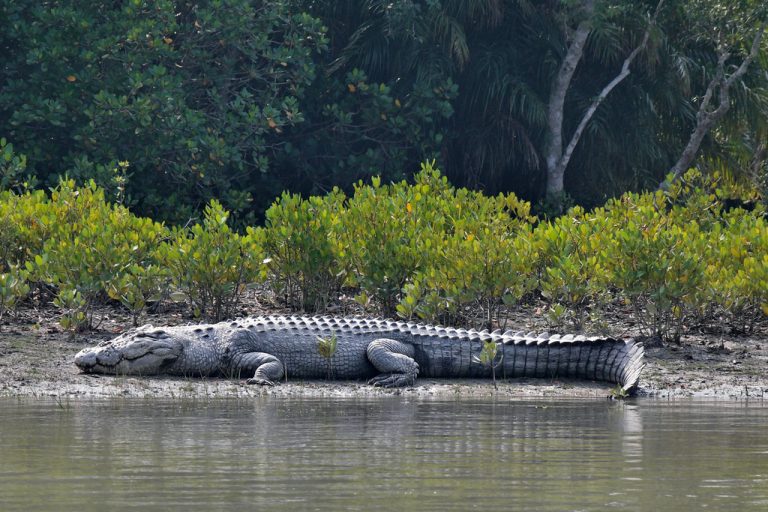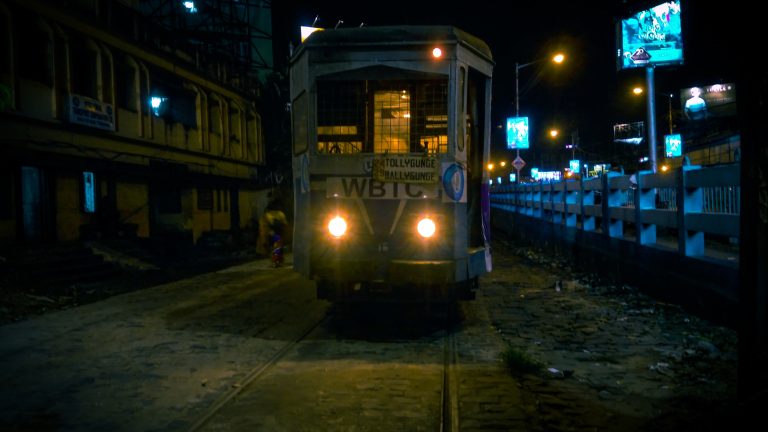The native Bengali dialect’s translation of the word “sundarban” is “beautiful woodland.” A rare breed of Royal Bengal Tigers known for their prowess in the water call this swampy forest home. It’s the only area in the world where tigers still hunt people for food. Therefore, large stretches of nylon net fencing have been put up along the forest boundaries to keep the animals from wandering near the people. However, you should not go hoping to see one, since the native tigers often stay hidden within the park’s tiger reserve, which is an area where business and tourist operations are restricted.
Things to Do
The real fun of visiting Sundarbans National Park is taking in all of its untouched and natural splendour. Unfortunately, some visitors leave feeling let down, generally because they had great hopes of seeing tigers when they came. The national park is not accessible by foot or by car, which makes it difficult to spot wildlife. In the national park, there are no jeep safaris, and no boats can be docked along the river banks.
Spend your time instead exploring enchanting villages, learning about the culture, and taking in performances. In the Sundarbans region, you can even taste some honey that the locals have collected.
The most well-known game watchtowers for tourists to visit are Sajnekhali, Sudhanyakhali, and Dobanki because of their vicinity. Alternatively, you can spend the day on a boat safari exploring the canals in search of monkeys, water monitor lizards, crocodiles, otters, wild boars, spotted deer, and birds.
Watchtower Sightings
Visitors can view wildlife in safety from watchtowers spread out over the park. Independent travellers can view the natural world conveniently and independently from three towers. The watchtowers at Sajnekhali and Sudhanyakhali are popular with birdwatchers, respectively. At Dobanki, a 20-foot enclosed canopy offers panoramic views of the park and its wildlife.
A full day of boat travel is needed to reach some of the more remote watchtowers, but the effort is repaid by a serene, uncrowded nature setting. The Raimangal River is where the Burir Dabri watchtower is situated. It is really scenic and features a walkway that crosses the mangroves and leads to a vantage point. At Netidhopani watchtower, you may see the remains of a temple that was built 400 years ago. Special permits are needed and there is a cap on the number of visitors. In the Sundarbans, Bonnie Camp is the tallest watchtower at 50 feet.
Sajnekhali is the starting point for this magnificent watchtower’s six-hour journey. However, there is a rest house where travellers can spend the night. Due to its severe isolation, Jhingekhali, which is situated on the Sundarbans National Park’s easternmost edge, is frequently disregarded. Even yet, the best chance to observe a tiger and a number of endangered bird species is from this watchtower.
Organized Tours
The Sundarbans National Park can be visited in a number of ways, but for those who find independent travel to be logistically challenging, a sundarban tour can be a wonderful alternative.
Day trips, overnight excursions, and multi-day trips are all available as organised tours with a predetermined itinerary that includes lodging. Safari-style boat cruises on the rivers to visit watchtowers and towns are frequently included in guided tours. The majority of tours leave from Kolkata and return to the same area.
Considerations like flexibility and privacy should be kept in mind when signing up for an organised tour. Hotels and travel companies will typically reserve a full group for boat cruises. This can result in a loud encounter that disturbs the peace of your visit, depending on the demographics of the group.
Additionally, the larger boats are inappropriate for the confined rivers, where it is more probable that you may see wildlife in the park. If you have concerns about this, it would be advisable to make independent plans and hire a private guide.
How to reach?
We have a dedicated post on reaching sundarbans here. For now, let’s discuss this in a nutshell.
The primary entrance to Sundarbans National Park is on Sajnekhali Island, where all entrance fees must be paid, hence access is only possible by boat. The location of Netaji Subhash International Airport at Dumdum is in West Bengal, that is around 100 kilometres (62 miles) southeast of Kolkata.
Unfortunately, getting to the park on your own is a very time-consuming process. The local railway, which does not accept bookings, may be very busy, therefore it is advisable to travel by boat, vehicle, or bus. Driving is an option to reach Godkhali, Sonakhali, Namkhana, Canning, Raidighi, and Najat from Kolkata. Take a ferry or rent a boat to Sajnekhali once you reach there.
Public buses travel from Kolkata to Sonakhali in three hours, leaving every hour (beginning at 6.30 a.m.). Take an auto-rickshaw from Sonakhali to Godhkali, the Sundarbans’ entrance hamlet, and then a boat to Sajnekhali.





![Is Alcohol Allowed in Sundarban? The Answer Is No [Here’s Why]](https://www.maalaxmitravels.com/wp-content/uploads/2022/11/alcohol-in-sundarbans.jpg)
